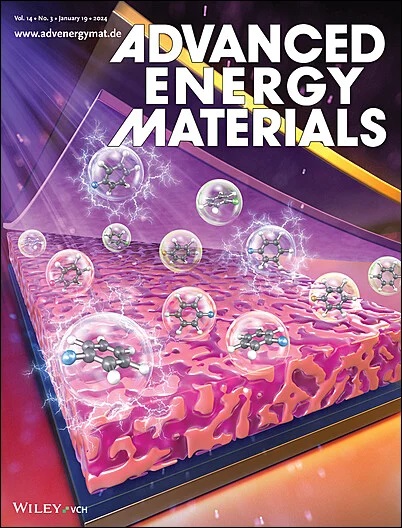Phosphorus-Based Flame-Retardant Electrolytes for Lithium Batteries
IF 24.4
1区 材料科学
Q1 CHEMISTRY, PHYSICAL
引用次数: 0
Abstract
The increasing demand for high-performance energy storage systems has driven a significant focus on developing electrolytes for lithium-ion batteries (LIBs), known for their high energy density and cycle stability. Organic electrolytes play a crucial role in enhancing battery performance due to their high ionic conductivity and wide electrochemical stability. However, their flammability and volatility pose serious safety risks, including thermal runaway and fire hazards. To address these issues, research is advancing on flame-retardant electrolytes, particularly fluorine (F)-based and phosphorus (P)-based compounds. F-based flame-retardants work by interrupting flame propagation through radical scavenging mechanisms but require high concentrations to be effective, leading to increased costs and adverse effects on electrolyte properties. In contrast, P-based flame-retardants offer distinct advantages, including lower toxicity, reduced smoke generation, and high thermal and chemical stability. These properties allow P-based additives to be effective at lower concentrations, minimizing their impact on cost and electrolyte performance. This review highlights the diverse structures of P-based flame-retardant additives, exploring their characteristics, mechanisms, and impacts on battery performance, while also proposing future directions for next-generation materials to improve the safety and stability of LIBs, paving the way for fire-resistant, high-performance energy storage solutions.

锂电池用磷系阻燃电解质
对高性能储能系统日益增长的需求推动了锂离子电池(lib)电解质的开发,锂离子电池以其高能量密度和循环稳定性而闻名。有机电解质由于其高离子电导率和广泛的电化学稳定性,在提高电池性能方面起着至关重要的作用。然而,它们的可燃性和易挥发性构成了严重的安全隐患,包括热失控和火灾隐患。为了解决这些问题,对阻燃电解质的研究正在推进,特别是氟(F)基和磷(P)基化合物。f基阻燃剂通过自由基清除机制阻断火焰传播,但需要高浓度才能有效,这会导致成本增加,并对电解质性能产生不利影响。相比之下,p基阻燃剂具有明显的优势,包括较低的毒性,减少烟雾产生,以及高的热稳定性和化学稳定性。这些特性使得p基添加剂在较低浓度下也有效,最大限度地降低了它们对成本和电解质性能的影响。本文重点介绍了p基阻燃添加剂的不同结构,探讨了它们的特性、机理和对电池性能的影响,同时提出了下一代材料的发展方向,以提高锂离子电池的安全性和稳定性,为阻燃、高性能的储能解决方案铺平道路。
本文章由计算机程序翻译,如有差异,请以英文原文为准。
求助全文
约1分钟内获得全文
求助全文
来源期刊

Advanced Energy Materials
CHEMISTRY, PHYSICAL-ENERGY & FUELS
CiteScore
41.90
自引率
4.00%
发文量
889
审稿时长
1.4 months
期刊介绍:
Established in 2011, Advanced Energy Materials is an international, interdisciplinary, English-language journal that focuses on materials used in energy harvesting, conversion, and storage. It is regarded as a top-quality journal alongside Advanced Materials, Advanced Functional Materials, and Small.
With a 2022 Impact Factor of 27.8, Advanced Energy Materials is considered a prime source for the best energy-related research. The journal covers a wide range of topics in energy-related research, including organic and inorganic photovoltaics, batteries and supercapacitors, fuel cells, hydrogen generation and storage, thermoelectrics, water splitting and photocatalysis, solar fuels and thermosolar power, magnetocalorics, and piezoelectronics.
The readership of Advanced Energy Materials includes materials scientists, chemists, physicists, and engineers in both academia and industry. The journal is indexed in various databases and collections, such as Advanced Technologies & Aerospace Database, FIZ Karlsruhe, INSPEC (IET), Science Citation Index Expanded, Technology Collection, and Web of Science, among others.
 求助内容:
求助内容: 应助结果提醒方式:
应助结果提醒方式:


